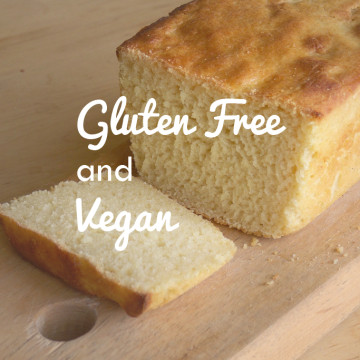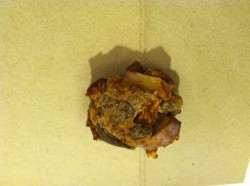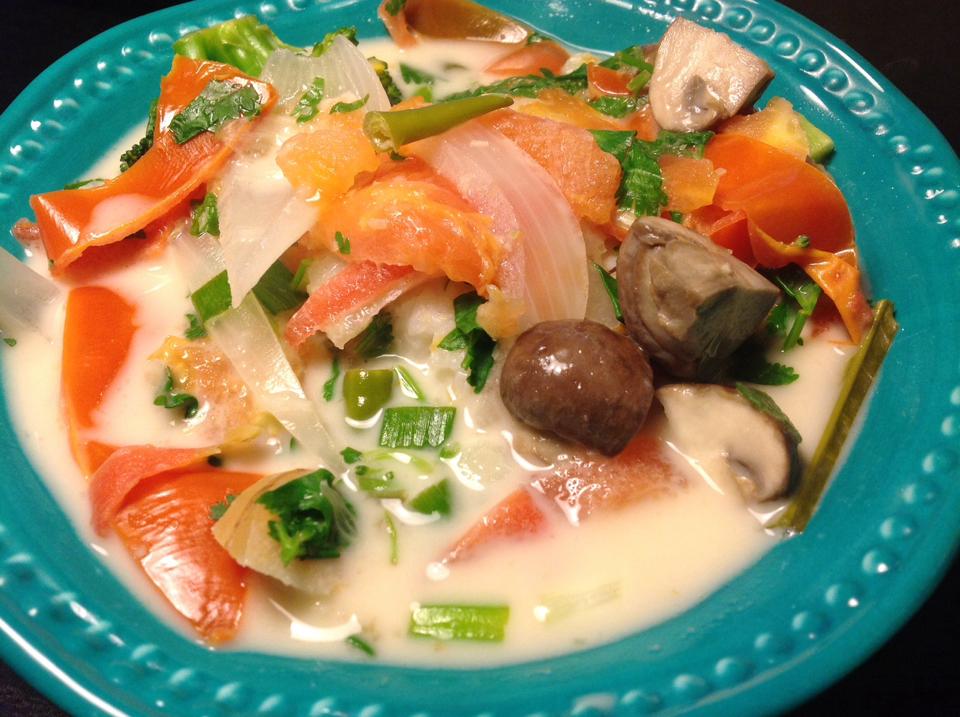 I was recently out with a friend when I encountered one of my first awkward-vegan moments: we’d ordered the only “non-meat” item–cryptically named–on the menu to share, and what arrived on the table was a ball of cheese accompanied with two breadsticks. I went for the bread, she for the cheese. It soon became obvious, even without our having to say anything, that we were both choosing based on dietary concerns. While I was abstaining from animal products, she was abstaining from gluten. Gluten-free (GF) has become one of the fastest growing food movements of recent years. 22% of adults have removed the protein from their diets, and there were 1,700 new GF products introduced to the market last year. (Update: The New York Times reports that 11% of American households have bought GF products in 2013. Only 1.8 million Americans (0.6% of population) actually have celiac disease). But what’s the hype all about? Gluten-free diets are primarily used for the treatment of Celiac disease, an autoimmune disease that lives in the small intestine. When a person with Celiac consumes gluten, his or her immune system starts to attack the villi of the small intestine, which prevents the absorption of nutrients. According to another estimate, about 3 million Americans either suffer from Celiac or have increased gluten sensitivity, but 97% of those cases remain undiagnosed since symptoms are similar to those of a variety of other conditions–general digestive issues, diarrhea, bloating, and fatigue, all results of malnourishment. A GF diet is the only way to stop the effects and prevent complications of Celiac. However, GF is catching on even among those without Celiac for a number of reported health benefits. Studies show that less gluten in your diet can lead to clearer thinking, reduced inflammation, and increased energy. As a vegan, I know that there are drawback and upsides to all dietary restrictions, so I’ve always been skeptical of further reducing my list of food option by going GF. Just like not eating animal products can deprive a person of essential nutrients without proper substitutes, no gluten means that you miss out on many of the health benefits of glutenous foods. Finding GF products can be difficult for people without access to expansive grocery stores, and they often come with a high price tag. I do not have Celiac disease, but for curiosity’s sake, and at my friend’s recommendation, I decided I’d try being GF for a week to see what it’s all about. But before I began, I sketched out a plan to ensure success. Learn: I did my homework to learn as much as I could about gluten and was surprised at what the actual guidelines of GF were. Gluten is protein found in wheat, barley, rye, and triticale (a wheat-rye hybrid). That means I can’t eat any of those foods or foods made with them. I consulted the GF encyclopedia, glutenfree.com, to get a list of what to look for and avoid when I went grocery shopping. The Mayo Clinic also had a handy guide to the details of the diet.
I was recently out with a friend when I encountered one of my first awkward-vegan moments: we’d ordered the only “non-meat” item–cryptically named–on the menu to share, and what arrived on the table was a ball of cheese accompanied with two breadsticks. I went for the bread, she for the cheese. It soon became obvious, even without our having to say anything, that we were both choosing based on dietary concerns. While I was abstaining from animal products, she was abstaining from gluten. Gluten-free (GF) has become one of the fastest growing food movements of recent years. 22% of adults have removed the protein from their diets, and there were 1,700 new GF products introduced to the market last year. (Update: The New York Times reports that 11% of American households have bought GF products in 2013. Only 1.8 million Americans (0.6% of population) actually have celiac disease). But what’s the hype all about? Gluten-free diets are primarily used for the treatment of Celiac disease, an autoimmune disease that lives in the small intestine. When a person with Celiac consumes gluten, his or her immune system starts to attack the villi of the small intestine, which prevents the absorption of nutrients. According to another estimate, about 3 million Americans either suffer from Celiac or have increased gluten sensitivity, but 97% of those cases remain undiagnosed since symptoms are similar to those of a variety of other conditions–general digestive issues, diarrhea, bloating, and fatigue, all results of malnourishment. A GF diet is the only way to stop the effects and prevent complications of Celiac. However, GF is catching on even among those without Celiac for a number of reported health benefits. Studies show that less gluten in your diet can lead to clearer thinking, reduced inflammation, and increased energy. As a vegan, I know that there are drawback and upsides to all dietary restrictions, so I’ve always been skeptical of further reducing my list of food option by going GF. Just like not eating animal products can deprive a person of essential nutrients without proper substitutes, no gluten means that you miss out on many of the health benefits of glutenous foods. Finding GF products can be difficult for people without access to expansive grocery stores, and they often come with a high price tag. I do not have Celiac disease, but for curiosity’s sake, and at my friend’s recommendation, I decided I’d try being GF for a week to see what it’s all about. But before I began, I sketched out a plan to ensure success. Learn: I did my homework to learn as much as I could about gluten and was surprised at what the actual guidelines of GF were. Gluten is protein found in wheat, barley, rye, and triticale (a wheat-rye hybrid). That means I can’t eat any of those foods or foods made with them. I consulted the GF encyclopedia, glutenfree.com, to get a list of what to look for and avoid when I went grocery shopping. The Mayo Clinic also had a handy guide to the details of the diet.
Substitute: I’m no stranger to restrictive diets, and I am not planning to embark upon a week of deprivation. I knew that if I wasn’t smart about finding other carbohydrate options especially, I’d be miserable and feel unwell. But you can see in the above, there are many naturally GF foods, including all fruits and vegetables, that are completely fine to eat; and for non-vegans, dairy and meat are also on the Yum! list. I was happy to see that a number of grains I already have in my menu cycle, like quinoa and rice, are also GF. This week, I’ll try adding some new things to take the place of my wheat-based bread and cereals, which I’ll be able to continue to eat even after the week is through.
Experiment: Since I love to bake and cook, I plan to find even more new recipes that are GF and report back to you Peaceful Dumplings about the ease of adopting this lifestyle.
Next page: the results of my Gluten-Free Week!
Last Friday, I embarked upon an experiment to see why everyone was suddenly so excited about Gluten-Free diets, even in the absence of gluten-aggravated Celiac disease. My seven days are up, and I must say I would not recommend this diet unless required for medical reasons. I kept a log of how I felt and some of the new things I tried along the way, which hopefully will help you decide if going GF is right for you. Day 1: Things are off to a good start. I made a tasty breakfast of quinoa, soy milk, banana, and flax meal, which kept me full throughout the morning. The quinoa was a great substitute for my go-to cereals, like wheat bran and wheat germ, which are not GF. Things got challenging, though, when I couldn’t part take in the bread basket at lunch . . . but I prevailed. Day 2: I woke up surprisingly energized after less than 6 hours of sleep. Could it be working this fast?! My challenge today was going out to dinner, but thankfully the restaurant I chose was vegan (and thus conscious of special diets): the menu had a handy guide that indicated what items were gluten-free, soy-free, and nut-free. I was bummed I could not enjoy a seitan dish, but overall I was happy with my other options. Without the menu’s coding, though, it would have been hard to choose what I could order. Day 3: Another morning full of energy–hooray! I went shopping to pick up some GF items, including amaranth, almond flour, and coconut flour. These were somewhat hard to find in the grocery store (even on my store’s Organic floor), and the flours were particularly expensive. I can see that GF might be a hindrance for my baking hobby. Day 4: I’ve been trying different kinds of bread lately–quinoa and spelt among them–with great results. But my first GF bread, made of brown rice, did not make me happy. It had a strange consistency of rice that was left to cook too long in the pot: very hard, spongy, and dry. I’m not sure what I’ll do with this loaf once this week is over. Croutons? Day 5: Today for lunch I enjoyed a delicious GF soup, adapted from Smitten Kitchen. My miso was GF, but be sure to check the ingredients in yours (no barley!). To make it a meal, I added a scoop of quinoa and some GF/vegan almond cheese.
[Editor’s Note: Original version of this article suggested Lisanatti as a vegan cheese option. But Lisanatti almond cheese is NOT vegan as it contains milk protein. Vegan Gourmet brand cheddar cheese is a vegan, gluten-free, and certified delicious option. We apologize for the confusion.]
Day 6: For a snack, I packed one of the GF Apple Cinnamon muffins I made. These are filling and dense, but definitely not real muffins. Day 7: I confess: today I fell off the wagon (but for a good cause!). I indulged in a piece of vegan chocolate cake during an office mate’s celebration, which I could not confirm was GF. I can imagine that socializing while sticking to GF is just as hard as it is when you’re vegan, and I sympathize with those who don’t have the luxury of “cheating” due to medical complications. In summary, this is what I took away from this week: Pros: More energy, interesting new food options, lost about 1 pound (although I can’t claim any of these effects had a causal link to being GF). Cons: Felt limited by restrictions, some digestive issues (rice is binding), substitutions were not always satisfying, suffering from ketones (dry mouth, bad breath, from low-carb/low-calorie diets) near the end of the week. Tonight, I’m going to embrace the whole wheat I’ve missed the past seven days. Will you try GF?
Day 7: I confess: today I fell off the wagon (but for a good cause!). I indulged in a piece of vegan chocolate cake during an office mate’s celebration, which I could not confirm was GF. I can imagine that socializing while sticking to GF is just as hard as it is when you’re vegan, and I sympathize with those who don’t have the luxury of “cheating” due to medical complications. In summary, this is what I took away from this week: Pros: More energy, interesting new food options, lost about 1 pound (although I can’t claim any of these effects had a causal link to being GF). Cons: Felt limited by restrictions, some digestive issues (rice is binding), substitutions were not always satisfying, suffering from ketones (dry mouth, bad breath, from low-carb/low-calorie diets) near the end of the week. Tonight, I’m going to embrace the whole wheat I’ve missed the past seven days. Will you try GF?
[update on Jennifer’s GF experiment]: Occasionally GF: Making Peace with Gluten in Your Diet
Related: My “Beauty Detox” Journey
How I Started My Alkaline Diet
Also by Jennifer: 6 Steps to Starting Your Indoor Garden
Love this article? Keep up-to-date on the latest from Peaceful Dumpling: Subscribe to our Newsletter!
__
Photo: Artis Rosental / Peaceful Dumpling /Lisanatti / Jennifer Kurdyla





